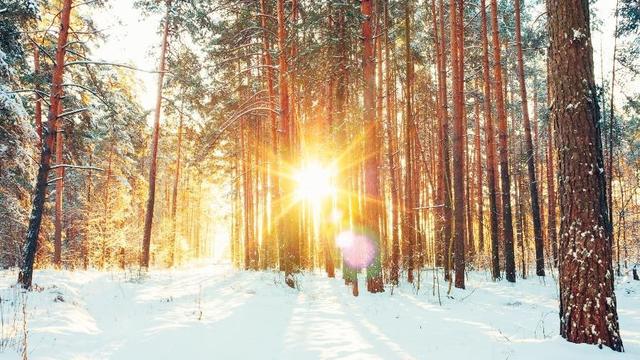Minnesota’s winters are warming faster than nearly any other state in the contiguous United States.
But according to a new study published in the journal of Earth and Space Science by researchers from across the University of Minnesota, summers are beginning to heat up, too.
Projections from this study show that winter temperatures could rise by 11 degrees Fahrenheit by the end of the 21st century, with far fewer days of snow on the ground.
Minnesota summers, which haven’t warmed significantly up to now, could see temperatures rise by 7 degrees Fahrenheit in the same time period.
The study was led by Stefan Liess in the Department of Soil, Water, and Climate.
Bonnie Keeler, associate professor of environment, technology, and environmental policy at the Humphrey School of Public Affairs, was a member of the research team. It’s clear from the results, she says, that Minnesota will become warmer and wetter.
"Shorter winters will shift patterns of outdoor recreation, warmer waters will change fish composition and increase the frequency of harmful algal blooms, and more intense precipitation events will stress water infrastructure,” Keeler said. “Given the myriad impacts of climate change, these projections represent the best available information we can provide to stakeholders as they work to adapt to a changing Minnesota.”
Using resources at the Minnesota Supercomputing Institute (MSI), researchers performed county-scale model simulations of the climate across Minnesota valid for the middle and end of the 21st century, using two different scenarios (RCP4.5 and RCP8.5) for global emissions of greenhouse gases adopted by the Intergovernmental Panel on Climate Change.
Results provide data from eight recent global climate model projections over 6-mile by 6-mile areas, which is much finer than most global climate models and will provide more detailed information on how temperatures and precipitation are expected to change at any location in the state.
The researchers found:
- Spring precipitation could increase by more than half an inch per day over northern Minnesota.
- Snow depth could decrease by more than 5 inches, especially in central eastern Minnesota.
- The number of days per year with snow cover may decrease by up to 55, especially in central Minnesota.
These results are expected to influence regional decision-making as communities across Minnesota gain the ability to use this published data for climate adaptation action plans.
“Early awareness and mitigation have the potential to preserve valuable ecosystems for future generations,” said Liess. “Mitigation and adaptation strategies need to be put in place to address these future changes. These projections would impact multiple important state sectors including agriculture, pest management, water and energy management, forestry, health care (adaptation to heat related health issues) and tourism.”
Next steps for this line of research include projecting future crop yields and analyzing the data in relation to the frequency of extreme climate events. In addition, researchers plan to create an updated projection with 3-by-3-mile spatial resolution.
Other members of the University of Minnesota research team include Tracy Twine, Peter Snyder and Gabriel Konar-Steenberg from the Department of Soil, Water, and Climate; William D. Hutchison from the Department of Entomology; and Kate Brauman from the Institute on the Environment and Global Water Security Center - The University of Alabama.
Funding for this project was provided by the Minnesota Environment and Natural Resources Trust Fund as recommended by the Legislative-Citizen Commission on Minnesota Resources (LCCMR).



